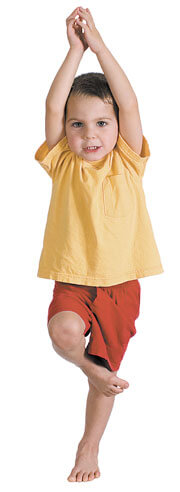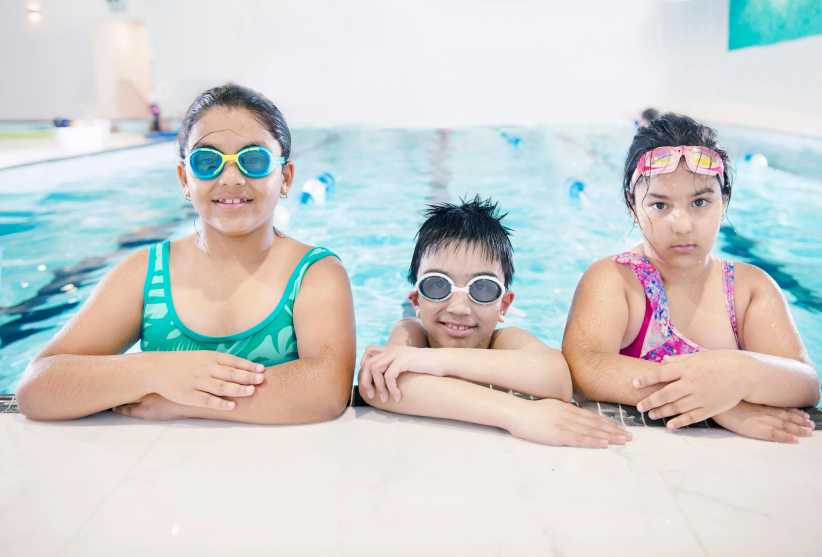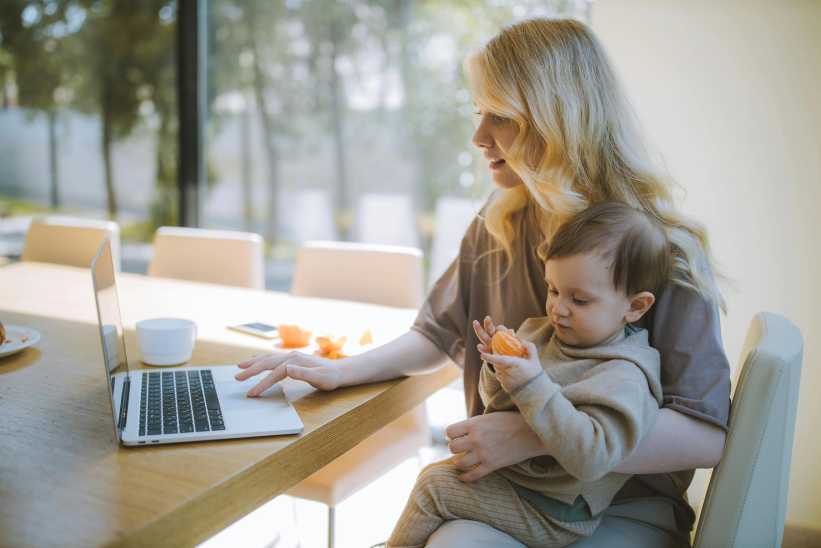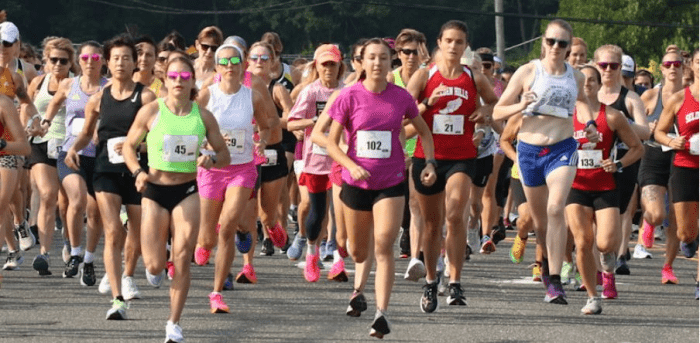Yoga is an age-old discipline developed and practiced in India and more recently introduced and popularized throughout the United States. Yoga, as it was originally practiced, included the physical discipline of breathing and body postures designed to strengthen and cleanse the body as part of a spiritual philosophy. Some still associate yoga with “religion”. However, here in the United States, most students of yoga practice only the physical forms of yoga. Some of the original Indian language of Sanskrit is still used to name the postures and breathing exercises.
If you are looking for something therapeutic for your child that can be fun, economical, and done in a group, consider yoga. Adaptive yoga for children with special needs is a way to incorporate the benefits of traditional yoga with the particular needs of your child or teen, regardless of their disability.
What is adaptive yoga?
Yoga uses breathing practices and body postures to strengthen muscles, improve balance, increase body awareness, allow greater range of joint motion, promote relaxation and emotional regulation. Adaptive yoga, like other adaptive sports or forms of recreation, uses props and modified practices to allow people with disabilities to experience the same benefits.
For example, a yoga prop such as a foam block, a soft cushion, or even a folded blanket can support the torso or other parts of the body during a stretch. Using a cloth bag filled with sand in a breathing exercise can provide both deep pressure for sensory calming as well as resistance for slack stomach muscles. A yoga strap or belt wrapped can be looped around the feet to help a child extend or hold a stretch. The list of props is endless and many household items such as a bathrobe belt or a rolled up towel or blanket can be used in place of expensive accessories.
Other modifications include allowing a child to work in a chair, wheelchair, or on a therapy table. Adaptive teachers can also teach partial postures or incorporate yoga movements into a game or song. Adaptations are endless and creativity is key to presenting yoga concepts and practices to children with less attention span, low muscle tone and body awareness, poor ability to communicate or comprehend language, or limited physical ability.
Also, working in a group enables students more opportunity to experience something therapeutic in a social setting. In an adaptive yoga class, students practice social skills and follow the the discipline of a formatted yoga practice. Also, in a yoga class, students are encouraged to work at their own level, even while working as a class on the same posture or sequence.
Combining therapies
Other types of therapies can be incorporated into the framework of yoga to benefit a variety of special needs. For example, the child with poor muscle tone, due to a neurological disorder, could benefit from strengthening core muscles of the trunk and building stamina. This can be achieved through a series of yoga postures in the same way as a physical therapist or exercise physiologist might prescribe. An adaptive yoga teacher might work as a trainer with a teen or a class of teenagers, building up to a number of “yoga push-ups”, “yoga lunges”, or breaths during a balance.
Spasticity, tightened or shortened muscles can be addressed through simple joint movements such as pointing and flexing the toes and ankles. In therapeutic yoga, these movements would be practiced slowly and incorporated with alternating inhales and exhales. For students with limited movement, a yoga teacher can use a more hands-on approach to help the student achieve greater range of motion. Similar to physical therapy, the yoga difference is in the combination of breathing and movement. Many standing postures incorporate ankle flexion combined with weight-bearing for more intense stretching. Coordinated breathing combined with these movements help students hold stretches for longer periods of time, and develop new patterns of sitting and standing.
Traditional yoga practice incorporates all parts of the physical body including the eyes. Vision exercises such as those used by developmental optometrists are a natural part of an adaptive yoga class. Brain Gym, a discipline of therapeutic movement designed to help with learning difficulties, also incorporates many eye exercises into practice. Again, in yoga, these physical movements, even those done with the eyes, are coordinated with breath.
Bilateral motor integration refers to the effective use of both sides of the body to complete a task. Many children with developmental disabilities lack coordination in this area. This affects balance as well as left-right spatial awareness. Bilateral practice is a natural part of many yoga postures. For example, lifting the right arm then the left and coordinating this pattern with the feet to the beat of a yoga chant can become a fun and challenging game of balance. Students can then be encouraged to hold the postures, gradually learning to balance independently on one foot or the other. These exercises can also be done in a chair or close to a wall or other support for students who are unable to stand or balance.
Balance is an important goal in any yoga practice. Many yoga postures and practices focus on balancing practice. Even if a child is unable to balance well, practice can help improve compensation for a poorly functioning vestibular system, that part of the inner ear from which we get our sense of balance.
To help with proprioceptive ability, the neurological relay of information from the body to the brain, yoga postures promote weight-bearing for the arms, legs and works on improving joint mobility. In more advanced postures, even the shoulders and the head bear some weight. A core component of all yoga postures and exercises is strengthening the muscles of the trunk, especially the abdominals. This helps children with poor posture due to low muscle tone. It can also help prevent fatigue, increase stamina, and promote calming in children with attentional problems. Other sensory and core-building activities may include the use of sandbags, hula hoops, therapy balls, and lavender-scented eye pillows for deep relaxation.
Vocalization is also incorporated as a form of yoga therapy. Children learn to modulate their voices and their tolerance of noise. They learn to notice how a loud or vigorous group activity can affect their own level of arousal. Vocalizing in a group also gives students with sensory issues an opportunity to appropriately address when noise is too much. We use recorded music (loud and soft), singing (when appropriate), screeching, growling, buzzing, as well as being very, very quiet.
Breathing
Most of us seldom pay attention to the way we breathe. In fact, most people are “shallow breathers”. This means we are not aware of the tendency to breathe into our chest, filling only the upper portion of the lungs. These short shallow breaths result in respiration which is inefficient because you breathe many more shallow breaths to get adequate oxygen into the circulatory system. Shallow breathing actually creates the “fight or flight” stress response in the body. Breathing shallowly and rapidly signals your body to react as if it is constantly responding to a crisis, fatiguing not only the muscles of respiration, but the organs and glands that help regulate the body.
Breathing, unlike blood pressure or digestion, is one of the few autonomic body systems over which we have control. For example, we can take a pill or change our diet to affect digestion. But, we can immediately and directly slow down and deepen the breath. Deepening the breath encourages greater intake of oxygen, nourishing for all body organs including the brain.
Most children are unaware of their breathing. Children with disabilities may be even less aware of their breath, especially since the muscles and the effects of respiration are not as obvious or rewarding as moving an arm or a leg on command. Some children even habitually and unconsciously hold their breath. Awareness of the breath can be difficult and sometimes confusing for children, especially those with cognitive or processing issues. This can make breathing one of the most challenging practices to teach, yet it is the most important.
For children who struggle with symptoms of emotional regulation, mood swings, anxiety, or lethargy, breathing techniques can help to modulate the body. The rhythm of breath is a constant companion, a tool that can be used for focus of a busy mind and a racing heart. The sound of the breath, too, can be used to calm and center a child with anxiety. In the beginning of a class or individual yoga session, we might practice an energizing or invigorating breath.
Beginning students might practice simple breathing exercises like taking a deep breath, holding the breath, and breathing only through the nose. Teachers can use belly sandbags to provide sensory input to the muscles surrounding the diaphragm. Different breathing techniques can be modified for children such as “bee breath” where the child makes a buzzing sound on the exhale. This is both soothing for the sensory system and helps focus the attention on lengthening the exhale in a fun way. When the room is filled with the sound of buzzing exhalers, children can have fun, make noise, and practice breathing. Bunny breath is done by rapidly breathing out and in through the nose and helps children become aware of and practice breathing control. A simple practice like counting the breaths can serve as a tool for students who have difficulty sustaining attention.
Body awareness
One of greatest benefits of yoga for children with special needs is increased body awareness. Coordinating breathing and movement together becomes the first level of work. For example, lifting an arm on the inhale and lowering on the exhale not only helps with motor control and planning, and provides an inner sense of rhythm.
Identifying muscles and parts of the body as they are being used gives students a sense of power and self-esteem. For example, being able to correctly identify the thigh, ankle, wrist or chin helps kids embody the words they hear used so often. More complex tasks include learning to flex or tighten a muscle. They can learn, in a real body sense, what it means to relax. They practice noticing and being able to point to or even name where they feel a stretch, a tension, or other sensation. Students can learn the anatomical names of muscles, bones, and the locations of joints in their own bodies as they practice. More advanced students can even learn which postures and exercises stretch or strengthen a particular muscle group.
Finding a yoga teacher
Yoga is often not thought of as therapy. Yet, there is a growing body of practitioners who use the methods and techniques of yoga as a therapeutic tool in various populations, setting, and disabilities. Some are licensed in other medical fields such as physical, occupational, or recreational therapy. Others may be yoga teachers who adapt traditional yoga practices to meet the needs of the specialized population they are teaching. Some have specialized training and certification from a yoga therapy program. These programs are growing to meet the needs of certified yoga teachers who want to specialize in the therapeutic application of yoga.
Clearly, people are recognizing that yoga as a stand-alone therapeutic tool or combined with another discipline can be of great benefit for those with disabilities and in need of physical rehabilitation. Yoga is especially suited for use in school systems for both students with and without disabilities.
Teachers can work with individual students in a medical setting or private studio. Insurance reimbursement is rare unless the teacher is also a licensed medical practitioner or the session is performed under supervision of a licensed person.
Unfortunately, there are few who specialize in the disabilities of children. However, this is a field in which we will likely see future growth. If you cannot find a person who is practiced at teaching yoga to children and who understands disabilities, consider creating a class of your childrens’ peers. Consult with an occupational therapist to help modify and adapt postures to meet the needs of the class, or consider taking some yoga training yourself. Some of the best adaptive teachers are parents of children with disabilities. As you know, we are the most experienced at understanding our childrens’ special needs.
Reprinted with permission from. Parenting Special Needs Magazine, Sept/Oct Issue, Copyright [2009] by Parenting Special Needs LLC. www.parentingspecialneeds.org






















